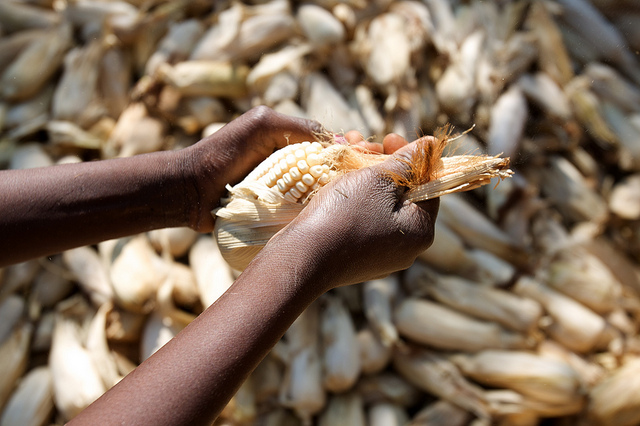Malawi’s Farm Input Subsidy Program, launched in the mid-2000s, has been lauded as a model for other countries in Africa, as some evidence suggests the program has increased maize yields and boosted rural incomes. But is this conventional wisdom true? A recent article published in the journal Agricultural Systems found that subsidizing fertilizer prices presents economic trade-offs for smallholder maize farmers in Malawi, and that win-win situations remain elusive.
Smallholder farmers aiming to improve their livelihoods often encounter unanticipated complexities, even from programs designed to benefit them. Our study found that subsidizing fertilizer prices increased fertilizer use, maize yield, and household income—but it also had a disincentivizing effect on the use of organic-based materials and methods in maintaining on-farm soil fertility. Specifically, lowering fertilizer prices reduced the area of legumes under cultivation—an important source of biological nitrogen fixation. This captures the trade-off a farmer might encounter when deciding whether to use a productivity-enhancing input on a lower-yielding legume, versus a higher-yield crop like maize that is also a key staple crop for household consumption. This supports other observations in the literature that show the effect of fertilizer subsidies in boosting maize area and yield, while crowding out other crops, including cash crops that could raise overall per hectare net revenue.
Our analytical methodology used existing household survey data to develop and calibrate an agricultural model for the most representative household type in the sample. Our forward-looking, computational model integrated biophysical and socioeconomic information and analytic components to provide a holistic analysis of potential trade-offs and synergies that agricultural households might encounter. Our simulated responsiveness of yield to a price change in fertilizer matched closely with other estimates in the literature, justifying our specification.
Our farm-household simulation model-based analysis complements other statistical and structural, model-based economy-wide approaches that have been used to evaluate fertilizer policies in Malawi. Our benefit-cost ratios (dividing the per farm-household benefits of the subsidy by its costs) were in line with the benefit-cost ratios of other studies, further contributing to the supporting evidence and consensus on the potential effect and effectiveness of a fertilizer price subsidy policy aimed at smallholder farmers. Nonetheless, a fuller exploration of the potential range of the implied benefit-cost ratios for a fertilizer price intervention, drawing from multiple studies and approaches, is warranted and could help clarify important sources of uncertainty.
Nevertheless, our study’s findings resonate with some key messages from other analyses of the fertilizer price subsidy program in Malawi—namely, that it may encourage more maize production, but not necessarily promote sustainable on-farm intensification. The vicious cycle of population pressure, shrinking land holdings, increasing soil degradation and more desperate attempts to cultivate maize to satisfy staple demands may only be further reinforced by a fertilizer-price-focused policy. Meanwhile, policies aimed at relieving the key constraints that our model tries to capture—such as land, credit and labor availability—might go further towards addressing the bottlenecks to on-farm intensification that smallholders in Malawi encounter, and could lead to the adoption of better on-farm practices that reverse soil degradation and improve the long-term viability of small-holder agriculture.
Adam Komarek is a Research Fellow and Siwa Msangi a Senior Research Fellow in IFPRI’s Environment and Production Technology Division.







